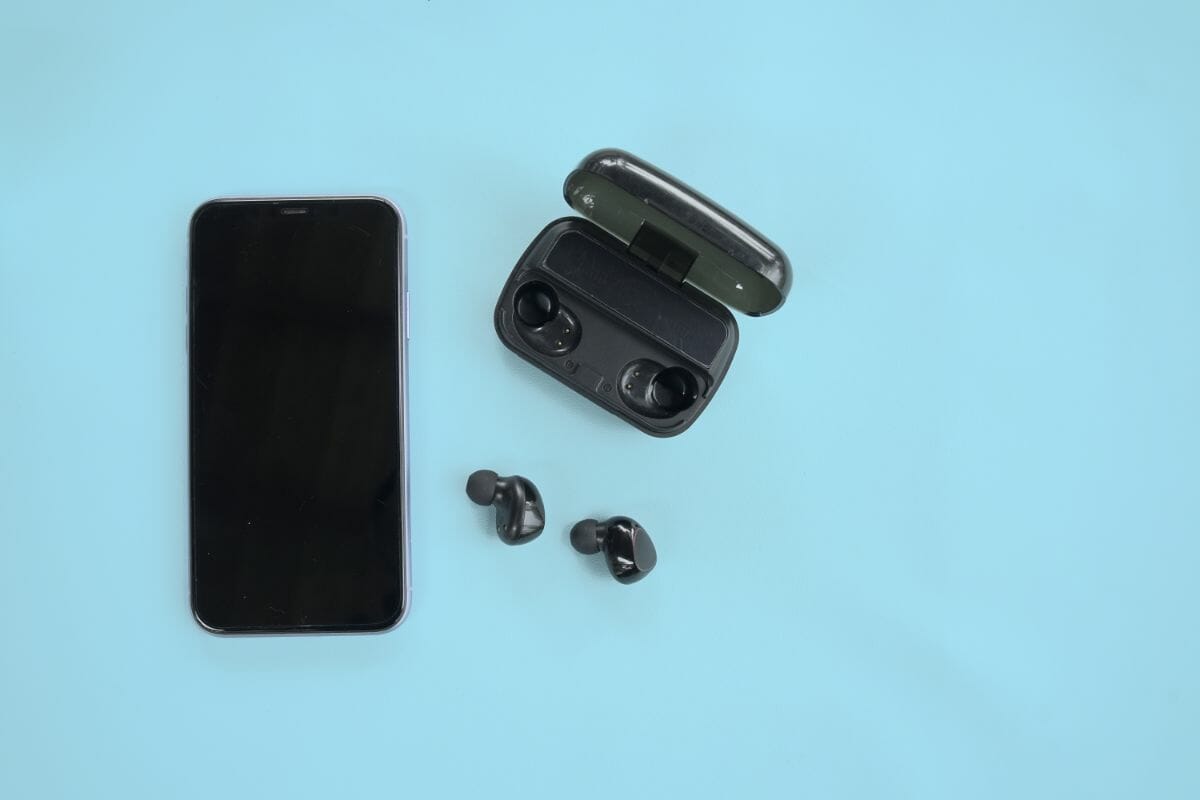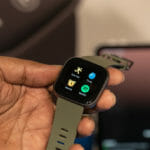Are you curious to find out exactly how wireless earbuds work? In this article, we’ll delve into the technological wonder that is wireless earbuds.

These small, sleek earpieces have revolutionized the way we listen to music and communicate with each other, and while most of us own a pair (or more) we might not know how they work.
So, let me guide you through the science behind these impressive devices, but first, let’s have a look at what these accessories are exactly!
What Are Wireless Earbuds?
Wireless earbuds, also known as true wireless earbuds, are a type of earphone that connects to your device without the need for any cables or wires.
These earbuds use Bluetooth technology to transmit audio signals from your device to the earbuds instead of having the usual wire that you can plug into your phone.
What Are The Advantages Of Wireless Earbuds?
So, what makes these accessories so special and what are their advantages? Here are some of them:
- Compact and Lightweight design for comfort.
- Many different designs and styles to choose from.
- Freedom of movement so no need to worry about snagging.
Compact And Lightweight
First and foremost, wireless earbuds are designed to be compact and lightweight, something that makes them easy to carry around and wear for extended periods.
Customizable
They come in various shapes and sizes to fit different ear shapes and sizes, while some models even have customizable ear tips to ensure a perfect fit!
Freedom
Another one of the advantages of wireless earbuds is that they offer a degree of freedom and mobility that traditional wired earphones cannot match.
Without the need for cables, you can move around freely without worrying about getting tangled up. As a result, these types of earbuds are more than ideal for activities like running, working out, or commuting.
Advanced Features
What is more, wireless earbuds often come equipped with advanced features such as touch controls, noise cancellation, and voice assistants.
Superior Sound Quality
Last but not least, wireless earbuds also offer superior sound quality compared to traditional wired earphones, making them a popular choice among audiophiles.
What Are The Disadvantages Of Wireless Earbuds?
Even though wireless earbuds offer many advantages, they are not without their drawbacks. Here are some of the disadvantages of wireless earbuds:
- Battery life becomes a problem for the less vigilant.
- Connection issues at distances and when separated by walls.
- Wireless earbuds tend to be more expensive than wired.
- You could face compatibility issues with some ear buts and devices.
Battery Life
Wireless earbuds rely on battery power, which means that they need to be charged regularly. Some models only offer a few hours of battery life, which can be inconvenient for long trips or extended listening sessions.
Connectivity Issues
Wireless earbuds can experience connectivity issues, particularly in areas with a lot of interference. This can result in dropouts or interruptions in the audio signal, which can be frustrating.
Price
Wireless earbuds are often more expensive than traditional wired earphones. This can make them a less accessible option for some consumers.
Compatibility
Finally, some wireless earbuds may not be compatible with all devices or operating systems. This can limit their usefulness for some users.
How Do Wireless Earbuds Work?
To understand how wireless earbuds work, we need to dive deeper into their technical aspects.
In particular we need to look at their Bluetooth technology, the microphones and speakers, their battery and way of charging them, the connectivity and pairing of the earbuds with your smartphone, the noise cancellation feature, and the touch controls.

So, let’s explore each of these aspects in detail.
| Aspect | Description |
|---|---|
| Bluetooth Technology | Wireless earbuds use Bluetooth technology to communicate with your device. It creates a secure wireless connection for data exchange. |
| Microphones and Speakers | Wireless earbuds have built-in microphones to pick up your voice and speakers to transmit sound. They deliver high-quality audio. |
| Battery and Charging | Wireless earbuds are battery-powered and need to be charged regularly. They often come with a charging case that doubles as a storage container. |
| Connectivity and Pairing | Pairing wireless earbuds with your device is a simple process. They use auto-pairing to connect automatically when taken out of the charging case. |
| Noise Cancellation | Many wireless earbuds feature noise-canceling technology to block out external sounds. It can be achieved through microphones and software. |
| Touch Controls | Wireless earbuds often have touch controls on the earbuds themselves, allowing you to control music and phone calls without reaching for your device. |
Bluetooth Technology
As mentioned earlier, wireless earbuds use Bluetooth technology to communicate with your device. Bluetooth is a wireless protocol that allows devices to exchange data over short distances.
It operates on radio waves and is designed to be energy-efficient, making it ideal for use in small devices like earbuds.
When you pair your wireless earbuds with your device, they create a secure wireless connection that allows the two devices to communicate with each other.
Once connected, the earbuds receive audio signals from your device and convert them into sound waves that you can hear.
Microphones And Speakers
Wireless earbuds come equipped with both microphones and speakers. Microphones are used to pick up your voice during phone calls or voice commands, while the speakers transmit sound to your ears.
The speakers in wireless earbuds are tiny, but they are designed to deliver high-quality sound. They use a combination of advanced driver technology and noise-canceling software to produce crystal-clear audio.
Battery And Charging
One of the most significant advantages of wireless earbuds is their portability. However, this portability comes at a cost – battery life. Since wireless earbuds are battery-powered, they need to be charged regularly.
Most wireless earbuds come with a charging case that doubles as a storage container for the earbuds.
The charging case contains a built-in battery that charges the earbuds when they are placed inside and when fully charged, the earbuds can provide up to several hours of listening time, depending on the model.
Connectivity And Pairing
Pairing your wireless earbuds with your device is a relatively simple process.
Most wireless earbuds use a process called “auto-pairing,” which means they automatically connect to your device as soon as you take them out of their charging case.
Once paired, your device will remember the earbuds and automatically connect to them when they are in range. This makes it easy to switch between devices, like your phone and your laptop.
Noise Cancellation
Wireless earbuds often come equipped with noise-canceling technology that blocks out external noise. This is achieved through a combination of microphones and software that analyze and counteract external sounds.
Some earbuds use active noise cancellation, which means they emit a sound wave that cancels out external noise. Others use passive noise cancellation, which means they physically block out external sounds by creating a tight seal in your ear canal.
Touch Controls
Many wireless earbuds come equipped with touch controls that allow you to control your music and phone calls without reaching for your device. These controls are usually located on the earbuds themselves and can be customized to suit your preferences.
The Bottom Line
Wireless earbuds are a marvel of modern technology. They offer portability, convenience, and high-quality sound without the hassle of cords and cables.
Undoubtedly, they have revolutionized the way we listen to music and communicate with each other. So go on and enjoy your music through your wireless earbuds!
- Best Fitness Trackers for Seniors: Because Counting Steps Beats Counting Wrinkles - December 29, 2025
- Best Smartwatches for Sleep Improvement: Snooze Like a Techy Genius - December 28, 2025
- Why do my Bluetooth headphones keep disconnecting? Solving the Mystery of Modern Audio Ghosts - December 27, 2025






